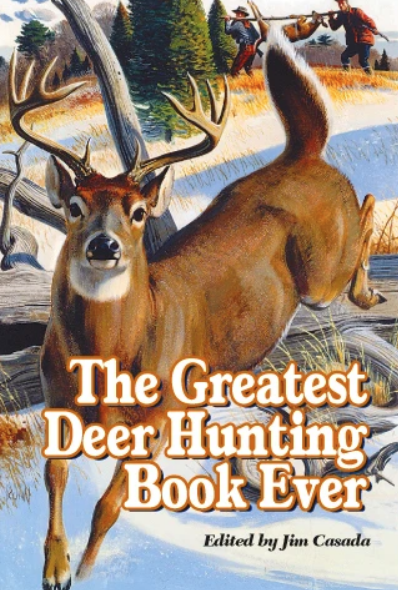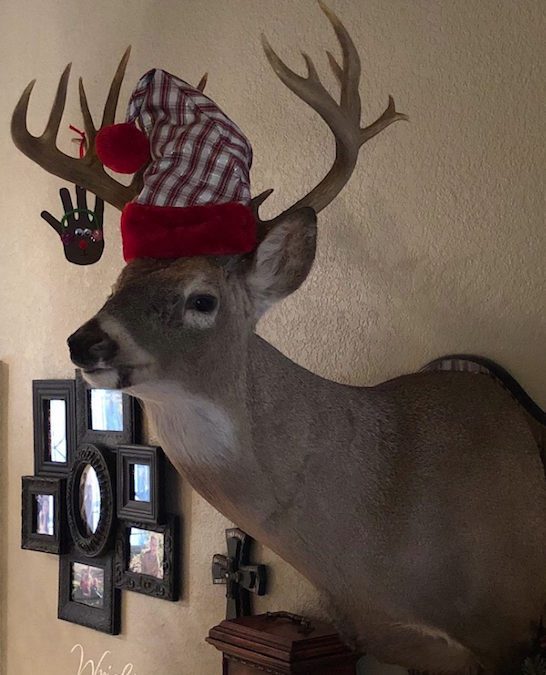Rather than disrespecting a trophy, a bit of tasteful decoration can help to establish him as part of the family.
For seven summers, the king enjoyed the adoration of his subjects, the ladies of his court literally fawning before him. His graying cape was stretched stately across his regal shoulders, and the crown atop his head was adorned with sixteen ivory tipped points. From the muddy red banks of the Cimarron River to snaking State Highway 51, he walked the length and breadth of his kingdom with an air of absolute authority, an entourage of lesser dignitaries trailing in his wake. To these the king delegated responsibility and dispensed justice with the wisdom of Solomon. Lost to history are the number of battles he won and sons he sired.
In the year of our Lord, 2010, the King of Oklahoma’s Green Country unwittingly followed that season’s queen into ambush and was deposed by means of poisoning. Lead poisoning. I waited half an hour after I pulled the trigger, watching the white oaks weep their leaves upon the forest floor, paying my respects to the noble king while he lie in state.
That sixteen point, seven-and-a-half-year-old sovereign of the Oklahoma hardwoods is wearing a Santa hat at present, and there’s a homemade Christmas tree ornament dangling from the kicker on his right G3. In a couple of weeks, his main beams will be strung with lights to ring in the New Year, and come April, there’ll be an Easter egg balanced between his brow tines. A deer for all seasons, no doubt. He’s more court jester than he is majestic monarch these days. Not exactly what I had in mind when I enthroned him above the fireplace all those years ago.
It could be worse, though. A family friend’s Cape Buffalo mount hung in my dad’s office for years where sunflower seeds were regularly shoved between its lips, reducing the beast responsible for more big game hunter’s deaths than any other to little more than a cartoon character. Kind of a Black Death Bugs Bunny. But even then, the old dagga boy still had some dignity. I’ve seen shoulder mounts banished to barns and garages, with everything from water hoses to hula-hoops dangling from their antlers. Not a dignified destination, to be sure, but at least those trophies still retain some usefulness. I’ve heard tell of aging hunters offering their memory-filled mounts to ungrateful grandchildren, and I’ve seen those same mounts for sale at flea markets and yard sales when those heirs failed to fully appreciate the value of the gifts they’d been given.
I suppose every taxidermied treasure eventually undergoes the same transition, and truthfully, I’ve accepted it. That whitetail on my wall may have been memorable and majestic when I shot him eight years ago, but these days he’s simply part of the family fabric, woven into the tapestry of our lives. And I’m just thankful he still has a home above the hearth.
The king is dead.
Long live the king.
 There’s something about the deer-hunting experience, indefinable yet undeniable, which lends itself to the telling of exciting tales. This book offers abundant examples of the manner in which the quest for whitetails extends beyond the field to the comfort of the fireside. It includes more than 40 sagas which stir the soul, tickle the funny bone, or transport the reader to scenes of grandeur and moments of glory.
There’s something about the deer-hunting experience, indefinable yet undeniable, which lends itself to the telling of exciting tales. This book offers abundant examples of the manner in which the quest for whitetails extends beyond the field to the comfort of the fireside. It includes more than 40 sagas which stir the soul, tickle the funny bone, or transport the reader to scenes of grandeur and moments of glory.
On these pages is a stellar lineup featuring some of the greatest names in American sporting letters. There’s Nobel and Pulitzer prize-winning William Faulkner, the incomparable Robert Ruark in company with his “Old Man,” Archibald Rutledge, perhaps our most prolific teller of whitetail tales, genial Gene Hill, legendary Jack O’Connor, Gordon MacQuarrie and many others.
Altogether, these carefully chosen selections from the finest writings of a panoply of sporting scribes open wide the door to reading wonder. As you read their works you’ll chuckle, feel a catch in your throat or a tear in your eye, and venture vicariously afield with men and women who instinctively know how to take readers to the setting of their story. Buy Now




